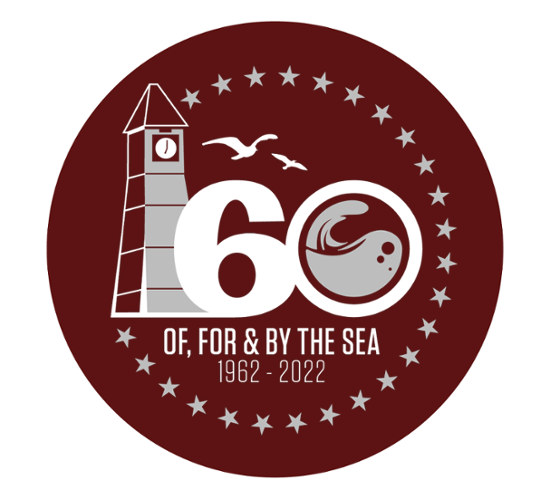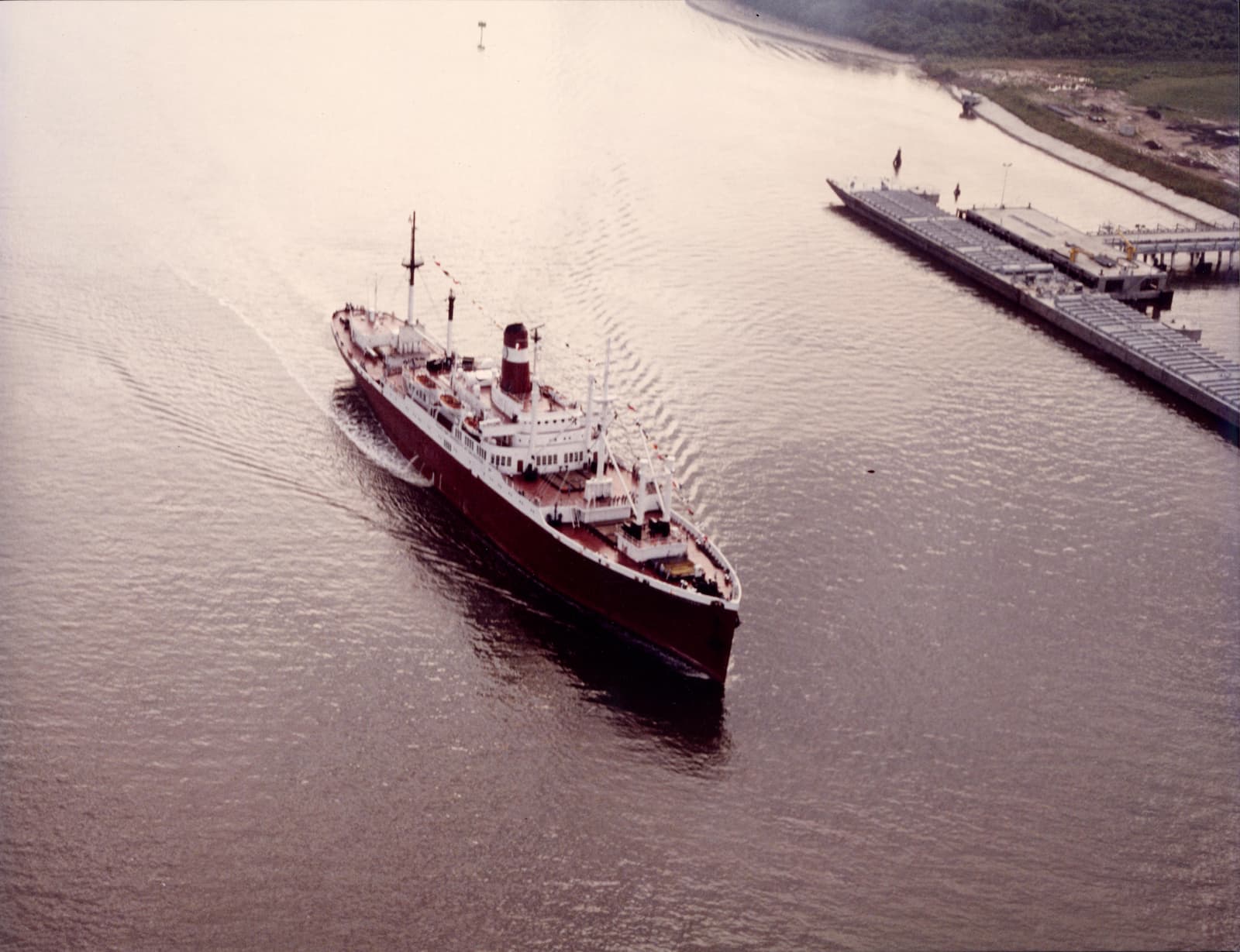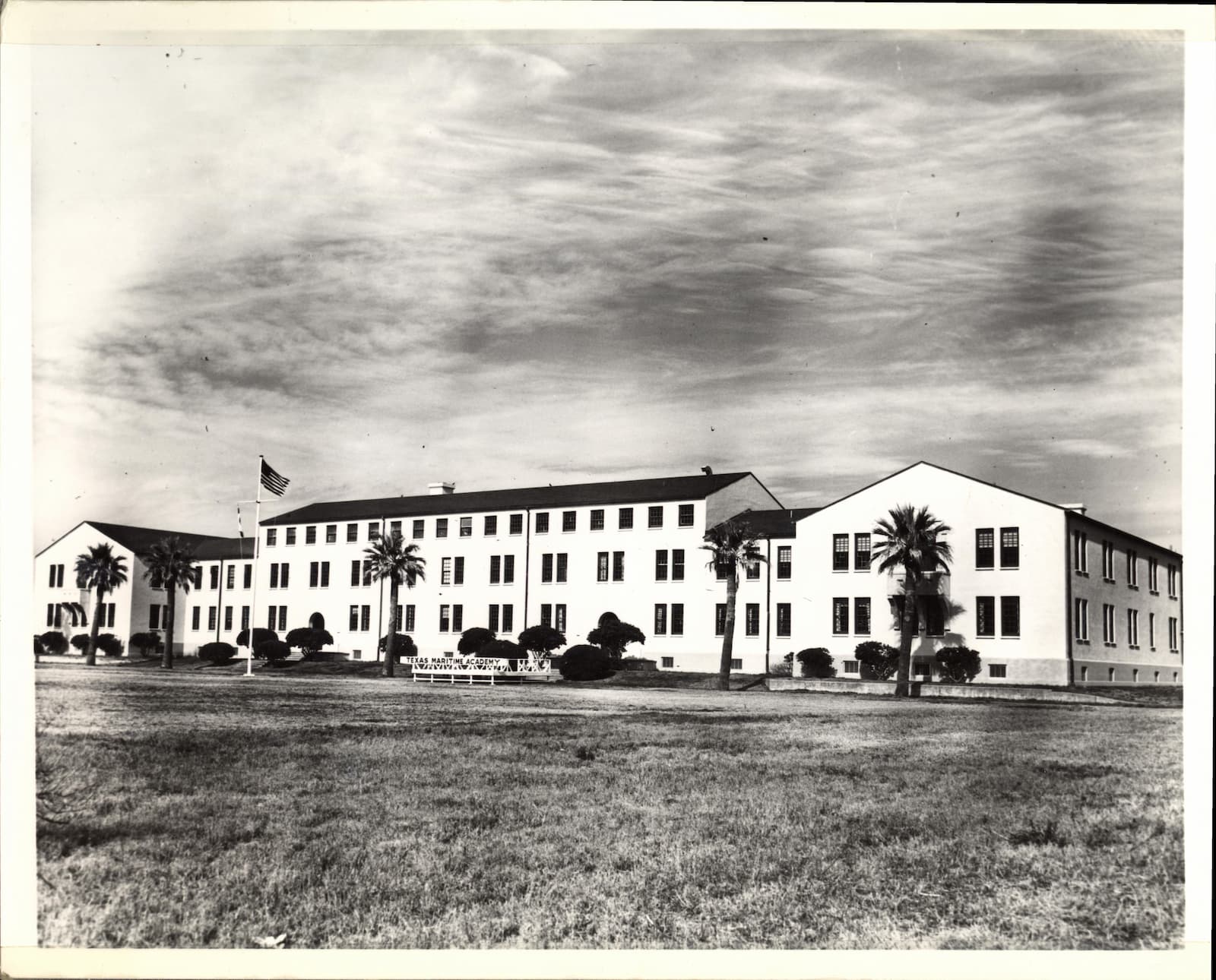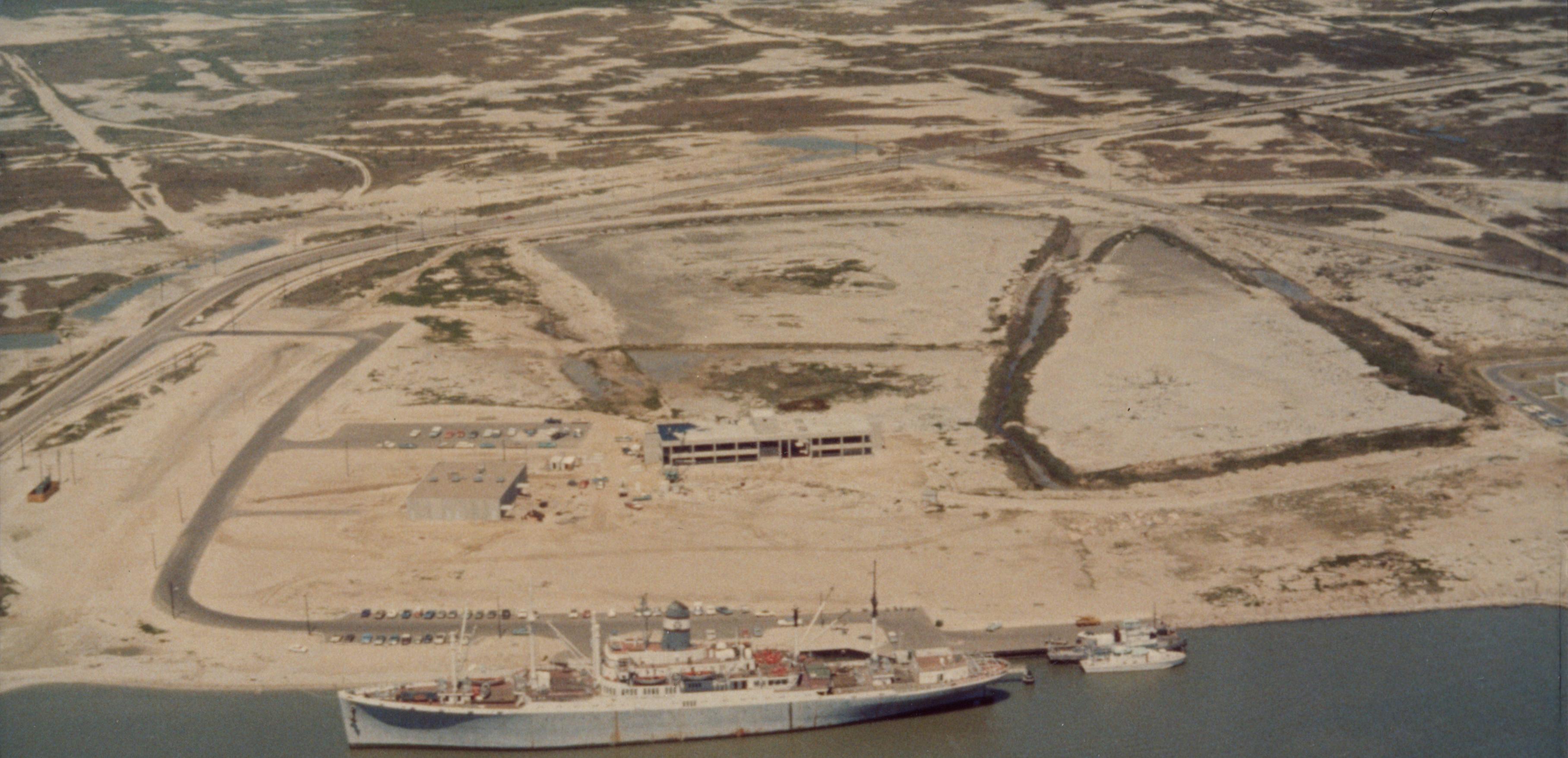Celebrating 60 Years of Marine & Maritime Excellence
Oct. 19, 2022
Tweet
By Rebecca Watts
Texas A&M University at Galveston and the Texas A&M Maritime Academy are celebrating 60 years of marine and maritime excellence.
The campus owes its creation to the tireless efforts of Galveston community leaders, elected officials and senior administrators at Texas A&M, who were galvanized by a simple question in 1958 and began a four-year campaign to establish a state maritime academy in Galveston.
Since then, Texas A&M’s Gulf Coast research and maritime origins have merged on Pelican Island to create Texas A&M University at Galveston, home to the Texas A&M Maritime Academy, with over 2,400 students, 12 undergraduate degree programs, five graduate degree programs and $21.5 million in research awards this year.
But it all started with a question.
Maritime Origins
Galveston was celebrating National Maritime Day in 1958 with an event featuring deputy administrator of the federal Maritime Administration, Rear Adm. Walter Ford. Ford’s remarks included mention of the four state maritime academies on the upper east and west coasts. These academies resulted from the same national push for vocational education that spawned the 1862 Morrill Act, from which Texas A&M University owes its origins, and compelled the federal government to authorize the creation of state maritime academies in 1874 to educate and train officers for the merchant marines.
To community leaders listening to Ford, it made sense to establish a fifth maritime academy in the nation’s busiest port on the ‘third coast.’ To support this notion, when Galveston banker Robert K. Hutchings asked Ford if Galveston could have a merchant marine academy, Ford responded encouragingly and helped the Chamber create critical connections with the east coast maritime academies.
The Galveston Chamber of Commerce immediately acted. It formed a merchant marine academy committee chaired first by Emmett O. Kirkham, for whom the campus’ original classroom-laboratory-administration building is named, and later by campus founding father Rear Adm. Sherman B. Wetmore.
Under their leadership, the committee gained considerable support from industry leaders, other state maritime academies, elected officials and the Texas A&M administration. The group overcame numerous setbacks, including funding and political hurdles. Key to navigating these obstacles was the Galveston legislative delegation, including state Sen. A.R. “Babe” Schwartz ‘47, Texas A&M president Gen. James Earl Rudder, Wetmore, and the Galveston Chamber of Commerce.
“My family has been involved with this campus for a lifetime – 60 years. My brother babe, Senator A.R. Babe Schwartz, was instrumental in the founding and funding of the Galveston Campus,” said Mrs. Phyllis Milstein, member of the Galveston Campus Board of Visitors and Chair of Texas A&M-Galveston’s Diamond Gala that took place in October. “Babe also authored much of the legislation for the Texas Gulf Coast and was particularly concerned with coastal and environmental stewardship. Therefore, he had a very special place in his heart for this university.”

Throughout his lifetime, Schwartz remained a staunch champion for the maritime academy and for Texas’s coasts and natural resources. His Coastal Public Trust Doctrine Collection is housed at the Jack K. Williams Library on campus.
On Jan. 26, 1962, Texas Gov. Price Daniel and Texas A&M President Earl Rudder signed the contract with the Maritime Administration to support the Texas Maritime Academy, administered by Texas A&M, in Galveston. On Feb. 24, the Board of Directors of the Texas Agricultural and Mechanical College System formally established the academy.
The academy’s first superintendent, Bennet M. Dodson, welcomed the first class of 23 cadets on Sept. 17, 1962. Cadets would spend one year in College Station, where they were also part of the first Marine Corps company in Texas A&M’s Corps of Cadets, and their remaining three years in Galveston at Fort Crockett in Galveston.
Building 311

The historical Fort Crockett is where Texas A&M’s marine research and maritime interests first converged. In 1958, the Marine Laboratory of the A&M College of Texas moved into Building 311. The location of the lab and the support of Resident Scientist Albert Collier were critical to gaining buy-in from Texas A&M administrators to support the maritime academy.
The laboratory served as a shore base for research vessels, contract research, student research, courses and teacher’s summer institutes. A year after the maritime academy began operating, Dr. Sammy Ray took Collier’s place and was named Director of the Marine Research Laboratory. Ray, a world-renowned marine biologist, is the grandfather of marine sciences for the Galveston Campus, the founder of Sea Camp and held every position from professor to interim president. His legacy continues today.
“Despite retiring in the 1990s after leading the growth of the Marine Biology department in Building 311 to the campus, Dr. Sammy Ray continued to be a presence on the Galveston campus until his passing in 2013. He was an old school scientist to the very end,” said Dr. Antonietta Quigg, senior associate vice president for research and graduate studies at the Galveston Campus. “Fond memories are carried by many faculty, staff and students of his stories and heroics, from service during the World War to saving precious collections of field samples when storms touched our campus. Sammy was passionate about protecting our environment, using oysters as a sentinel species for generations to come. He was a strong advocate at the state and national levels, being called to testify on many occasions. Generations of K-12 sea camp students fell in love with oysters after a “Papa Smurf” lesson.”
Ray considerably expanded research and teaching activities at the Marine Laboratory during his time as director. Texas A&M’s Departments of Wildlife and Fisheries Sciences, Biology, Geology, Oceanography, Meteorology, Education and Institute of Statistics used Building 311 for research and teaching. In 1963, the Texas Maritime Academy moved into the east wing.
The Moody & Mitchell Legacies
Funding and political challenges would continue to plague the maritime academy throughout the 1960s. However, the institution had strong advocates and generous support from the Galveston community.
In 1968, Schwartz once again successfully championed the state for maritime academy funding, and the academy received its single most significant contribution ever recorded, $1 million, from the Mary Moody Northen Foundation.
Galvestonian businesswoman and philanthropist Mary Moody Northen connected with the Texas Maritime Academy through the licensing and commissioning ceremonies for cadets at the Moody Memorial First Methodist Church. Northen was especially fond of the cadets and hosted breakfast for cadets before their departure for their annual training cruise.
“Each year she hosted breakfast for cadets before setting sail for summer sea term,” said Bill Hearn, who served in several roles at the Galveston Campus, including interim vice president and CEO from 2004 to 2005. “She would go down to the dock, sit under a tent, and wait until the ship sailed. She was really dedicated to this campus and supported us in a big, big way.”

The cadets reciprocated that affection with respect. During a ceremony aboard the academy’s first training ship, the TS Clipper, cadets presented Northen with a miniature Aggie Ring, making her an honorary member of the Corps of Cadets and earning her the title of ‘honorary commandant.’
The Maritime Academy remained housed in Building 311 until the generosity and philanthropy of Galveston native businessman George P. Mitchell ’40, a legendary oil and gas pioneer, real estate developer and all-time most generous donor in Texas A&M history, provided a permanent home in 1968 with a donation of 135 acres on Pelican Island.
The Moody and Mitchell legacies live on at the Galveston Campus. The student center on campus is named after Northen, and the Texas A&M Maritime Academy hosts the Mary Moody Northen Senior Breakfast for graduating sea-term seniors each summer in honor of her memory. And in a fitting tribute to Mitchell, the George P. Mitchell Society provides funding for an undergraduate scholarship each year, and his statue greets guests upon arrival to campus.
The Next 60 Years
Now, 60 years after Hutchings’ question, the maritime academy has morphed into Texas A&M University at Galveston, the marine and maritime branch campus of Texas A&M University and home to the Texas A&M Maritime Academy.
Focused on the economic, social, political and ecological vitality of the oceans and surrounding ecosystems, the Galveston Campus is leading the blue economy in the Gulf of Mexico while improving the understanding, stewardship and sustainability of these resources. The institution educates, innovates and discovers to support and manage waterborne commerce, create and change public policy, conserve and protect oceans, enhance and sustain fisheries, protect and enforce the nation’s sovereignty and cultivate knowledge and understanding. The demand is greater than ever for professionals to support these critical industries.
“Our researchers, faculty and graduates are literally driving the blue economy,” said Col. Michael E. Fossum, Vice President of Texas A&M, Chief Operating Officer of the Galveston Campus and Superintendent of the Texas A&M Maritime Academy. “From exploring alternative fuels for shipping vessels to rehabilitating sea turtles, to mitigating natural and human impacts to our oceans and coastal communities, the Galveston Campus directly contributes to better understanding, protecting and conserving our oceans and surrounding ecosystems. And our graduates are highly sought after and consistently enter well-paying careers as leaders in their fields.”
The global impacts of supply chain disruptions caused by the COVID-19 pandemic, severe weather frequency, and expansion of human-induced threats to the oceans, inland waterways and coasts have heightened awareness of the value of marine and maritime research and industry. The State of Texas alone has more than 3,359 miles of coastline, the vast natural resources of the Gulf of Mexico, the second-largest petrochemical complex in the world and six of the top ten ports for inbound and outbound tonnage in the United States.
It is clear that the demand for Texas A&M-Galveston’s specialized expertise is critical now and for the next 60 years.
Learn more about Texas A&M-Galveston’s recent initiatives in the Galveston Campus Newsroom.
###
Media contact:Rebecca Watts, Executive Director
(409) 740-4840
rwatts@tamug.edu
More:
Read more about Arts & Humanities
Read more about Business, Law & Society
Read more about Health & Environment
Read more about Science & Technology
Read more about Foundational Sciences
Read more about Liberal Studies
Read more about Marine Biology
Read more about Marine Engineering Technology
Read more about Marine Sciences
Read more about Maritime Administration
Read more about Maritime Transportation
Read more Executive News
Read more about Texas A&M Maritime Academy
Read more about Student Life